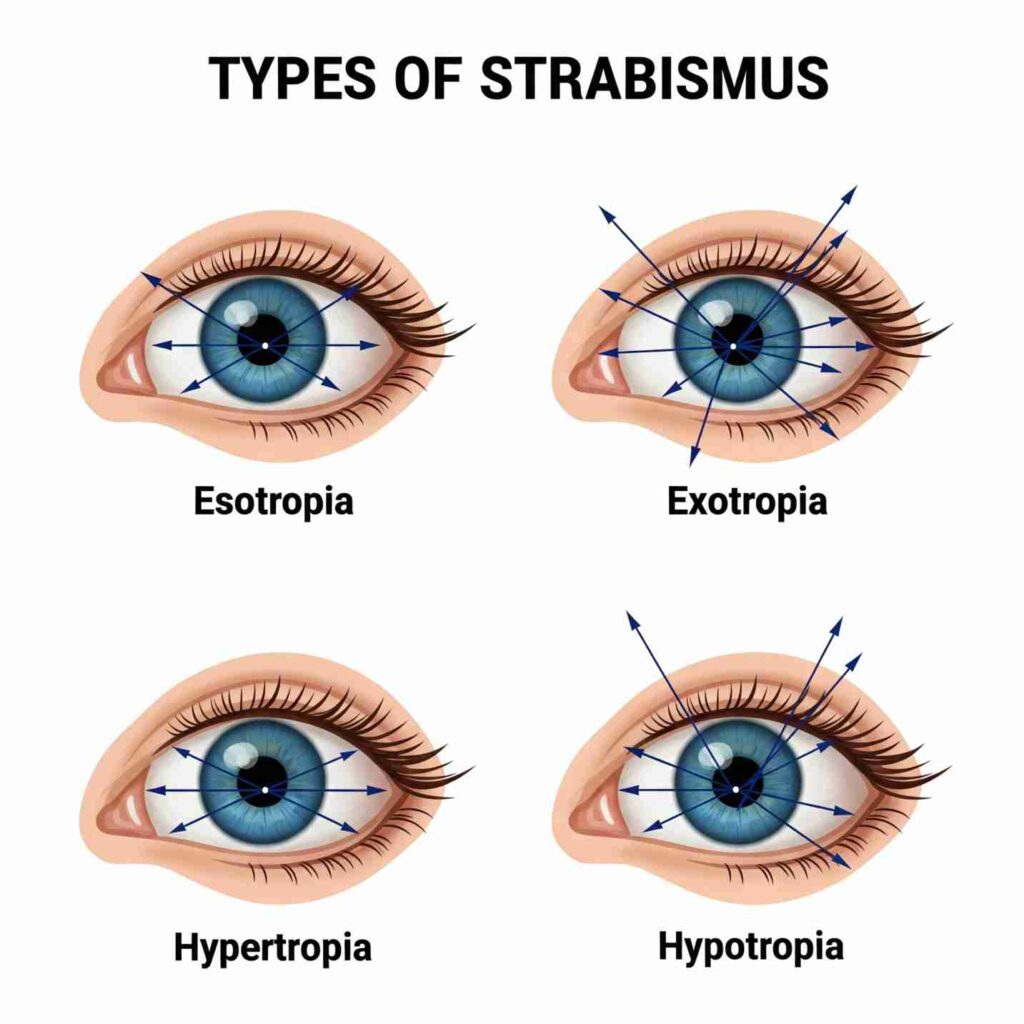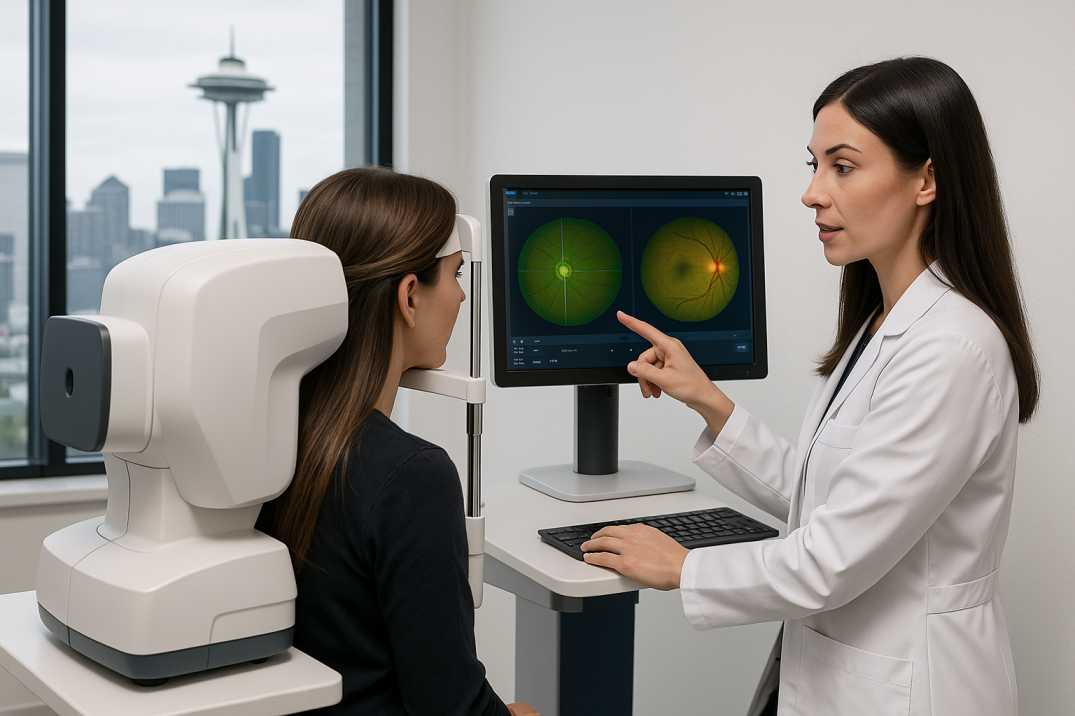Crossed Eyes
If you’ve ever wondered about crossed eyes or noticed your child’s eyes don’t quite align, you’re not alone. Strabismus, commonly called crossed eyes, affects approximately 4% of the U.S. population. At Cannon EyeCare in Seattle, we see families seeking answers about this condition daily—from concerned parents to adults experiencing sudden eye misalignment.
What Are Crossed Eyes (Strabismus)?
Crossed eyes (strabismus) occur when the eyes point in different directions simultaneously. While one eye focuses on an object, the other may turn:
-
Inward (esotropia – most common in children)
-
Outward (exotropia – often develops in school-age children)
-
Upward (hypertropia)
-
Downward (hypotropia)
Unlike lazy eye (amblyopia), which reduces vision in one eye, strabismus involves eye muscle coordination issues. These conditions frequently co-occur, making early detection vital for Seattle families at Cannon EyeCare.
Signs and Symptoms: What to Watch For
Detecting strabismus early is critical for effective treatment. Seattle parents should watch for these key indicators:
Common Visual Symptoms
-
Double vision (diplopia)
-
Poor depth perception or 3D vision
-
Difficulty focusing during reading or screen work
-
Frequent squinting or closing one eye
-
Unusual head tilting to see clearly
Physical Signs
-
Noticeable eye wandering or misalignment
-
Eyes failing to move together smoothly
-
Eye fatigue after visual tasks
-
Recurring headaches
If your child shows these signs, schedule a strabismus evaluation at Cannon EyeCare. Early intervention prevents long-term vision complications.
What Causes Crossed Eyes?
Understanding strabismus origins helps Seattle families seek timely care. Causes differ by age:
In Children
-
Genetic factors: Family history increases risk 5-10×
-
Premature birth: Especially low birth weight infants
-
Developmental conditions: Cerebral palsy or Down syndrome
-
Refractive errors: Untreated farsightedness triggering esotropia
In Adults
-
Neurological triggers: Stroke, brain tumors, or myasthenia gravis
-
Thyroid eye disease: Notably prevalent in Seattle residents
-
Trauma: Head injuries damaging eye muscles/nerves
-
Systemic illnesses: Diabetes (common locally), disrupting muscle control
Diagnosis: How We Identify Strabismus at Cannon EyeCare
Accurate strabismus detection requires advanced expertise. Our Seattle clinic uses a tiered approach:
Essential Screening Tests
-
Visual acuity checks: Measures each eye’s vision strength separately
-
Hirschberg test: Analyzes corneal light reflections for misalignment
-
Cover tests: Detects subtle eye deviations
-
Stereopsis assessment: Evaluates 3D/depth perception
Advanced Diagnostics
-
Prism measurements: Quantifies precise deviation angles
-
Forced duction testing: Assesses muscle mobility restrictions
-
Neuroimaging referrals: When neurological causes are suspected (e.g., post-stroke)
Treatment Options: From Glasses to Surgery at Cannon EyeCare
Seattle’s trusted approach prioritizes non-surgical solutions first, escalating only when necessary:
Non-Surgical Treatments
-
Corrective Lenses
-
Prescription glasses for refractive errors
-
Prism lenses to reduce double vision
-
*60-70% success for small-angle deviations*
-
-
-
Custom exercises to improve eye coordination
-
Highly effective for convergence insufficiency
-
*12-24 week programs at our Seattle clinic*
-
-
Patching Therapy
-
Strengthens weaker eyes in children <7 years
-
Proven effective with just 2-6 hours daily
-
Surgical Interventions
-
Minimally Invasive Eye Muscle Surgery:
-
Precise alignment adjustments at Seattle Children’s Hospital partner facilities
-
80-90% success rate | 1-2 week recovery
-
Adjustable sutures for optimal results
-
-
Botulinum Toxin (2025 Advancements):
-
Temporary solution for acute nerve palsy/small-angle cases
-
Ideal for surgery-ineligible patients
-
Living With Strabismus: Social & Emotional Support in Seattle
Thriving with strabismus involves practical strategies and community resources. Cannon EyeCare connects Seattle patients to tailored support:
Navigating Social Challenges
Workplace Confidence:
-
Presentations: Focus on listeners’ nose bridges
-
Interviews: Disclose condition only if it impacts tasks
-
Meetings: Choose seating for natural eye contact
Building Resilience
-
Join Seattle support groups (e.g., Rain City Strabismus Network)
-
Explore counseling for social anxiety management
-
Share experiences to educate peers
Prevention & Early Intervention: Safeguarding Vision in Seattle
Proactive care minimizes strabismus risks. Cannon EyeCare guides Seattle families and adults:
For Parents
-
Early Exams: Screen at 6 months + age 3 (per AAP)
-
Warning Signs: Head tilting, eye rubbing, or squinting
-
Screen Limits: Follow pediatric guidelines
-
Homework Lighting: Reduce eye strain during Seattle’s gloomy winters
For Adults
-
Annual Exams: Critical for diabetics/thyroid patients
-
Manage Conditions: Control blood sugar & thyroid levels
-
Eye Protection: Safety glasses for sports/Seattle outdoor work
-
Symptom Alert: Sudden double vision needs urgent care
Summary: Your Path Forward
Living with strabismus doesn’t have to limit your life. Whether you’re dealing with childhood strabismus or adult-onset symptoms, Seattle offers world-class treatment options. The key is early intervention and finding the right specialist who understands both the medical and emotional aspects of this condition.
At Cannon EyeCare, we’re committed to helping every patient achieve their best possible vision and quality of life. Don’t let crossed eyes hold you back—schedule your comprehensive eye examination today.
FAQs
-
Crossed eyes, or strabismus, is when the eyes don’t look in the same direction. You may see one eye turning inward, outward, up, or down




